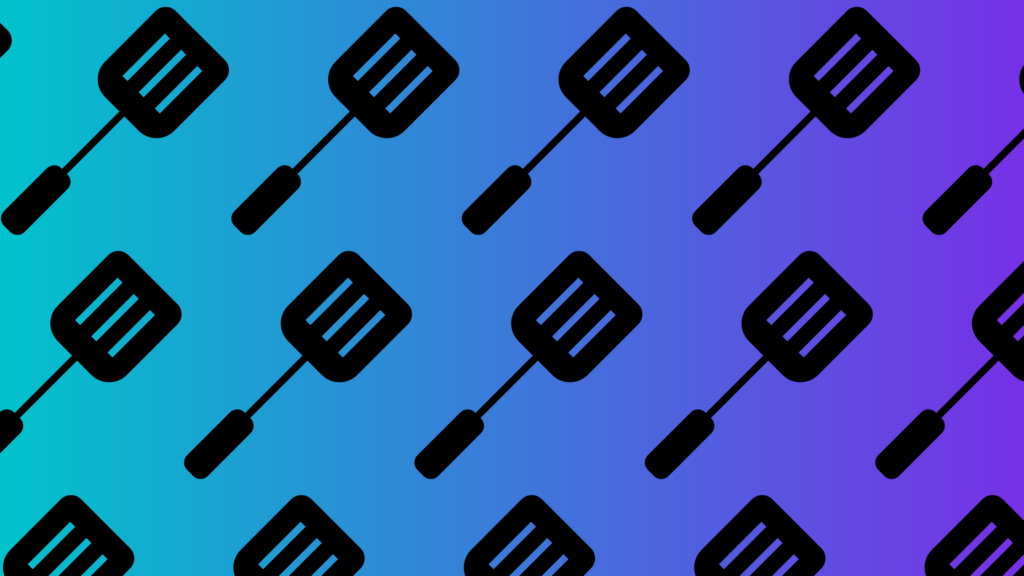Your reminder that science is messy, we love drama, and your spatula is (probably) not plotting against you.
In October, a study from the advocacy group Toxic-Free Future claimed that black plastic kitchen utensils, especially spatulas, were loaded with toxic flame retardants. These chemicals, they argued, likely came from the recycled materials used in production, which can sometimes carry remnants of their original industrial use, sparking widespread concern.
This sparked a flurry of advice from major outlets like The New York Times and CNN, urging folks to toss these utensils lest you suddenly develop cancer.
But here’s the thing: some eagle-eyed scientists scrutinized the research and found a glaring math error.
The journal Chemosphere, which initially published the study, issued a correction noting that the reported toxic levels were, in fact, way off. The researchers had miscalculated the potential daily intake of a specific flame retardant, BDE-209, leading to overestimating the associated risks.
When science cooks up a mess
This isn’t the first time the scientific community has had to clean up after itself.
Science is an ongoing process, full of trial, error, and the occasional “oops” moment that sends everyone back to the drawing board. While studies like the spatula scare often make for flashy headlines, they’re a reminder that not all published research is bulletproof and shouldn’t automatically be taken as the gospel truth.
Take, for example, the infamous “Mozart Effect,” a classic case of scientific misinterpretation amplified by media hype, which sent parents into a symphonic frenzy. Back in the 90s, a study claimed that listening to classical music could make you smarter. It didn’t take long for parents everywhere to start blasting symphonies for their toddlers. But follow-up research showed that the effect was wildly exaggerated and only temporary.
Turns out, any enjoyable activity can give your brain a little boost—Mozart not required.
Or consider the Stanford Prison Experiment, which claimed to show how power corrupts ordinary people. Decades later, investigations revealed that the study’s methods were questionable at best, with participants being coached into their “tyrannical” roles.
The result? A debunked study that’s still being taught in psych classes like it’s a golden rule.
And then there’s the infamous 1998 autism study, which falsely linked the MMR vaccine to autism, a claim that shattered public trust in vaccines and sparked a movement of vaccine hesitancy still felt today. This study, led by Andrew Wakefield, was based on fabricated data and a sample size of just 12 children.
Though it was later retracted and discredited, its impact has been devastating, fueling vaccine hesitancy and contributing to outbreaks of preventable diseases.
The truth takes time
So why does this keep happening? The answer lies in how science works.
Studies are essentially educated guesses based on available data—snapshots of understanding at a given time. They’re rigorously tested, challenged, and retested by other scientists to see if the results hold up, or if they crumble like my attempts at making edible chocolate chip cookies.
Sometimes, statistical errors or biases introduced by funding sources can skew results, highlighting the importance of replication and scrutiny in the scientific process. When errors are found—as with the spatula scare—it’s a sign that the system is working, not failing.
Peer review and replication are there to catch mistakes and ensure that what we ultimately accept as “truth” is as accurate as possible.
But the media often complicates things. In the cutthroat race to break the story, publications prioritize sensationalism over skepticism, turning preliminary or flawed findings into viral panics.
Or sometimes the journalists covering the studies just don’t understand what they’re writing about.
During the early days of the COVID-19 pandemic, some outlets amplified claims about hydroxychloroquine as a miracle cure despite the lack of rigorous evidence. This misstep spread false hope and muddied the waters for legitimate treatments.
That’s how a study with flawed conclusions turns into taking horse medicine to avoid a deadly virus—or tossing half your kitchen in the garbage.
It’s also important who’s funding the study. Research isn’t conducted in a vacuum, and funding sources can sometimes introduce subtle—or not-so-subtle—biases.
Companies with vested interests in certain outcomes may fund studies to sway public opinion or regulatory decisions. Industries like tobacco and sugar have historically bankrolled research that downplayed their products’ health risks. Recognizing potential conflicts of interest doesn’t mean dismissing the findings outright but evaluating them with a healthy dose of skepticism.
Lessons for the rest of us
Don’t believe everything you read at face value—even if it’s stamped with the credibility of a peer-reviewed journal. Remember that even the most rigorous studies are part of a larger conversation, not the final word. Look for follow-ups, corrections, and alternative perspectives. Science isn’t static; it’s a constantly evolving process.
Also, remember that being cautious doesn’t mean panicking.
Could there still be concerns about materials used in everyday items like spatulas? Sure. But one flawed study doesn’t mean you should ditch your utensil drawer.
So, next time you hear a claim about some everyday item secretly trying to kill you, take a breath and a moment to verify before tossing your stuff. Science will catch its own mistakes—eventually.
And your spatula? It’s probably safe for flipping pancakes.
